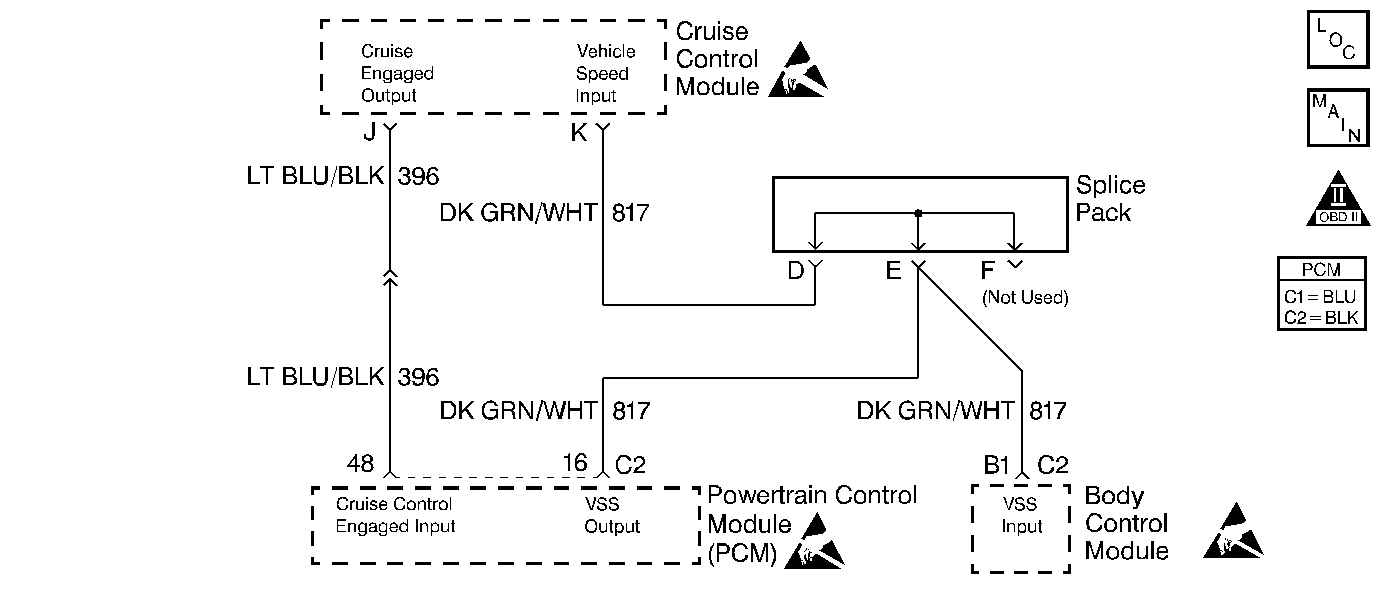
Circuit Description
Applying a vacuum to the EVAP system and monitoring for a vacuum decay checks the evaporative emission system. The control module monitors the vacuum level through the fuel tank vacuum sensor signal. At an appropriate time, the EVAP canister purge valve and the EVAP vent solenoid turn ON, allowing the engine to draw a small vacuum on the entire evaporative emission system. After the desired vacuum level has been achieved, the EVAP canister purge valve turns OFF, sealing the system. A leak is detected by monitoring for a decrease in the vacuum level over a given time period, when all other variables remain constant. A leak, a blockage or a malfunctioning component in the system causes a DTC to set.
Diagnostic Aids
Inspect for the following conditions:
| • | Poor connection at the control module. Inspect the harness connectors for the following conditions: |
| - | Backed out terminals |
| - | Improper mating |
| - | Broken locks |
| - | Improperly formed or damaged terminals |
| - | Poor terminal to wire connections. |
| • | A damaged harness. Inspect the wiring harness for damage. If the harness appears to be OK, observe the fuel tank vacuum display on the scan tool while moving connectors and wiring harnesses related to the sensor. A change in the display will indicate the location of the fault. |
| • | An incorrect purge or vacuum source line routing. Verify that the source vacuum and purge lines to the EVAP canister purge valve are not switched. |
Refer to Evaporative Emission System Cleaning before starting repairs.
Step | Action | Value(s) | Yes | No |
|---|---|---|---|---|
1 | Did you perform the Powertrain On-Board Diagnostic (OBD) System Check? | -- | ||
2 | Are DTC P0452, P0453 or P0460 also set? | -- | ||
3 | With the scan tool, command the EVAP canister purge valve and vent solenoid ON and OFF. Does the purge valve and the vent solenoid click when commanded ON and OFF? | -- | ||
4 |
Does the Fuel Tank Pressure read at the specified value? | 0 mmHg (±2.4 mmHg) | Go to DTC P0452 Fuel Tank Pressure Sensor Circuit Low Voltage or | |
5 |
Important:: Before continuing with diagnosis, zero the EVAP Pressure and Vacuum gauges on the EVAP pressure/purge cart J 41413 (refer to tool operating instructions).
Important: Do not exceed the pressure in the first specified value. Does the Fuel Tank Pressure read at the second specified value? | 12 mmHg (±4.8 mmHg) | Go to DTC P0452 Fuel Tank Pressure Sensor Circuit Low Voltage or | |
6 | With the scan tool, observe the EVAP system Pressure on the EVAP pressure/purge cart J 41413 while commanding the vent solenoid OFF (Open). Does the EVAP system pressure decrease to the specified value within 5 seconds? | 0 in. H2O | Go to DTC P0446 Evaporative Emission (EVAP) Vent System Performance | |
7 |
Is the Fuel Tank Pressure value decreasing? | 1500 RPM | Go to DTC P1441 Evaporative Emission (EVAP) System Flow During Non-Purge | |
8 |
Is the Fuel Tank Pressure value decreasing? | 1500 RPM | System OK |
